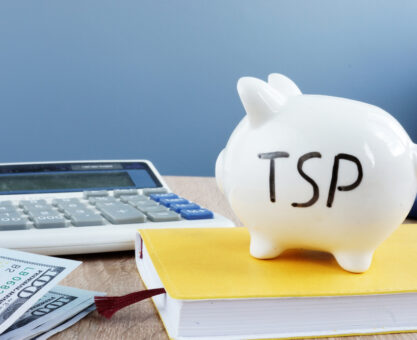Retirement planning starts long before you’re ready to head off into the sunset and enjoy your golden years. In fact, as a federal employee, retirement planning should begin the day you’re hired.
TSP Participation
From the first day you’re eligible, start contributing to your TSP. Be sure you’re contributing enough to take advantage of the 5% agency match, or you’re leaving money on the table. Whether you invest in a lifetime fund or choose your own fund allocation, understand that this is a long-term investment strategy that will need to be reassessed periodically as market conditions and life changes occur. The maximum contribution limit for the TSP is $23,500 in 2025. If you’re turning 50 or older this year, you can use the $7,500 catch-up contribution to bolster your balance. For employees turning 61, 62, or 63 in 2025, that catch-up contribution rises to $11,250.
FEHB Requirements
The federal government continues to pay the majority of your insurance premium in retirement, making it a valuable benefit. However, to be eligible, you must have been enrolled for five years prior to retirement. If you’re covered by your spouse’s insurance through a private employer or marketplace, you might want to weigh the benefits of switching to FEHB in time to satisfy the five-year requirement. Remember, if you’re enrolled in Self-and-Family or Self-and-Spouse and select a survivor annuity, your spouse can continue their FEHB coverage after your death.
Deposits for Military Service
If you want to buy back your military time to credit toward your civilian service, the process must be done before you retire. A set percentage (usually 3%) is multiplied by your base pay earned from military service. If you don’t pay this deposit in full within 2 years and 364 days, you will incur interest charges – so the sooner you pay, the better.
Review Personnel Records
You should regularly review your Official Personnel Folder to ensure it’s correct and current. Your Form SF 50 (Notice of Personnel Action) is usually updated annually and contains important information, such as the retirement plan you’re covered by and your service computation dates.
Social Security Timing
As you get closer to the finish line, you should have a better idea of what your retirement lifestyle and budget will be. You’re eligible to file for Social Security at 62, but doing so will reduce your monthly benefit permanently. However, if your annuity isn’t enough to cover your expenses, you might prefer to tap into Social Security early to preserve your TSP balance – especially if it’s a down market.
There are a lot of complexities to federal retirement planning, which can leave civil servants feeling overwhelmed. A free consultation with a Federal Retirement Consultant® can help you establish a clear snapshot of where you stand and a solid plan to reach your goals.























